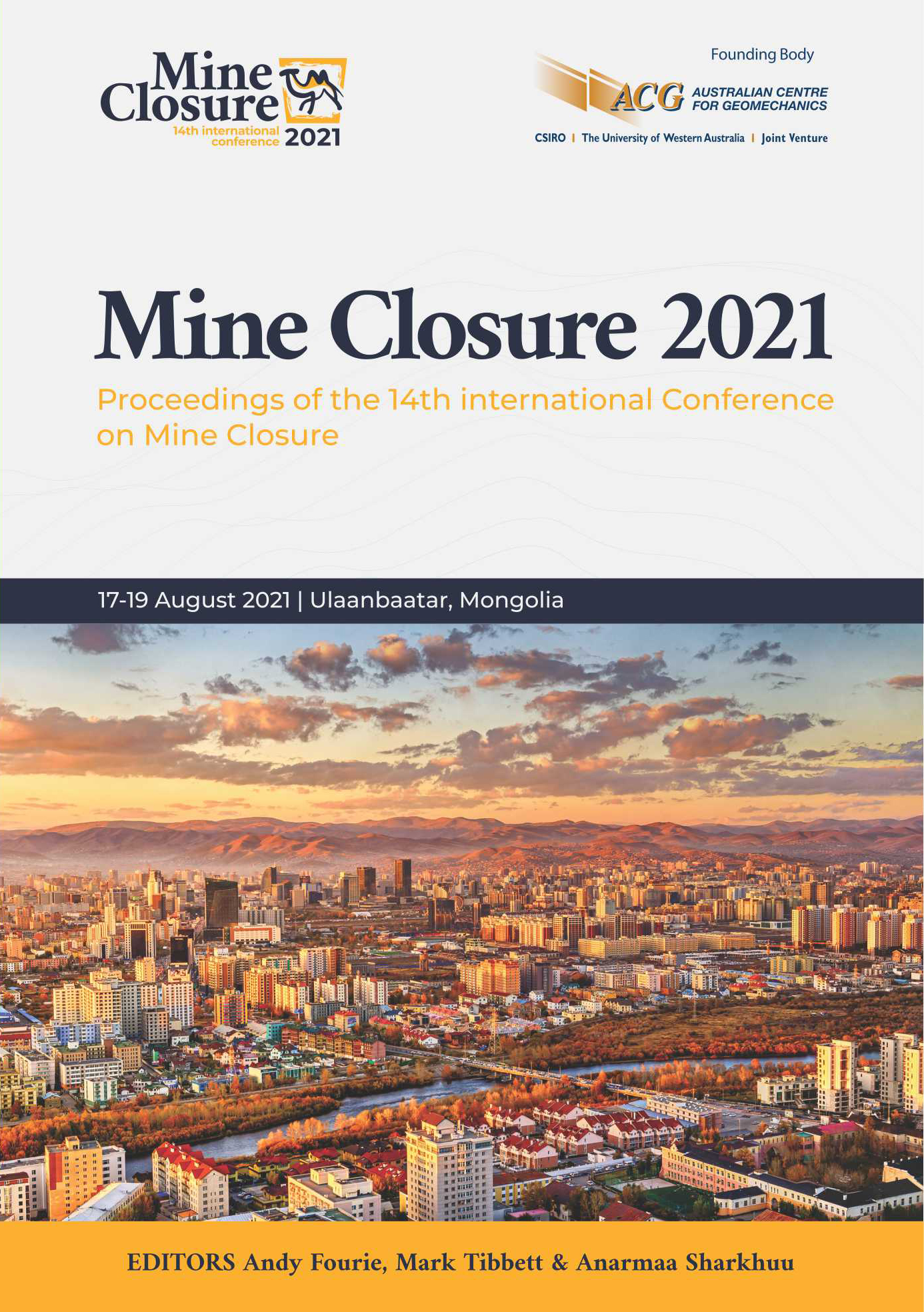Cover characteristics of a large gold tailings storage facility in South Africa: a case study

|
Authors: van Wyk, SJ |
DOI https://doi.org/10.36487/ACG_repo/2152_116
Cite As:
van Wyk, SJ 2021, 'Cover characteristics of a large gold tailings storage facility in South Africa: a case study', in AB Fourie, M Tibbett & A Sharkuu (eds), Mine Closure 2021: Proceedings of the 14th International Conference on Mine Closure, QMC Group, Ulaanbaatar, https://doi.org/10.36487/ACG_repo/2152_116
Abstract:
Topsoil placement on Tailings Storage Facilities (TSF’s) is not considered as standard rehabilitation practice in South Africa (SA). Historically, final earth covers have not been prescribed as part of tailings design and operation and no topsoil has therefore been provided in any way, let alone the financial provision thereof. Since final closure is nearing many mining operations, social and regulatory pressure confront mine owners to the reality of the impacts of uncovered TSF’s. Millions of people reside in urban areas where tailings facilities frequent the landscape (especially around Gauteng, Northwest and Mpumalanga Province). Environmental and geotechnical risk may also emanate from uncovered facilities where surface erosion, as well as water, soil and air pollution protection measures need to be committed to as part of final closure. From a lifecycle cost perspective, topsoil covers are now considered more readily as a viable closure solution alternative compared to liner and geo-membrane covers. However, limited knowledge exists about tailings-soil cover interactions, geotechnical implications of covers, and the eco-functional role thereof. The largest gold tailings facility in South Africa (>700ha) is coincidentally one of the exceptions since it is concurrently rehabilitated by means of topsoil on the side slopes and benches. This case study leads the way in understanding the performance of earth covers on SA gold TSF’s and provides insights into the soil cover performance, which now date back more than 50 years. The aim of the study was to investigate uniformity of soil placement through soil texture, soil depth, soil and tailings moisture content, vegetation surface cover and species richness across the rehabilitated tailings landscape. From the findings it was clear that distance to topsoil source and ramp access characterised the type of soil placed on the side slopes. It was found that five different soil classes were placed across the facility. Soil depth varied across the landscape and shale and dolerite rock matrix were frequently found throughout the study area. Furthermore, soil moisture levels in the cover were found to correlate with soil texture especially on high clay soil cover percentage, whilst moisture in the tailings was consistently the same throughout, except below clay soil covers. From a vegetation perspective, the surface cover was still less than 60% and the TSF is still in a pioneer state with weeds dominating the species richness and mainly commercially seeded grass species still occur. Since no original cover design for functionality criteria was considered as part of the operational focus, this case study presents an opportunity for real time field laboratory feedback on various soil textural and moisture regimes, and the information can be considered in the future design of topsoil covers for tailings facilities, whilst learning more about the ecological response to cover characteristics and climatic variability. Information about the functioning of the store-and-release cover could also be generated and advise whether the closure objectives can be met or to advise on objectives. Furthermore, approach must be incorporated into realistic closure success analogues for rehabilitation performance assessment standards in South Africa and underline realistic closure outcomes and an understanding of the total cost of ownership of a long term TSF operation
© Copyright 2026, Australian Centre for Geomechanics (ACG), The University of Western Australia. All rights reserved.
View copyright/legal information
Please direct any queries or error reports to repository-acg@uwa.edu.au
View copyright/legal information
Please direct any queries or error reports to repository-acg@uwa.edu.au
